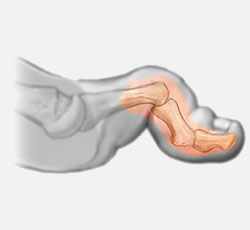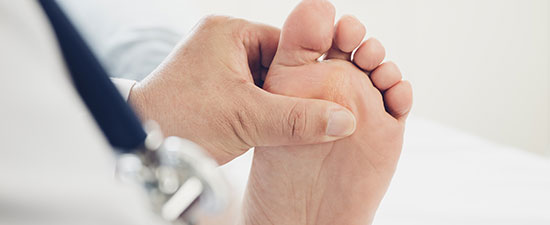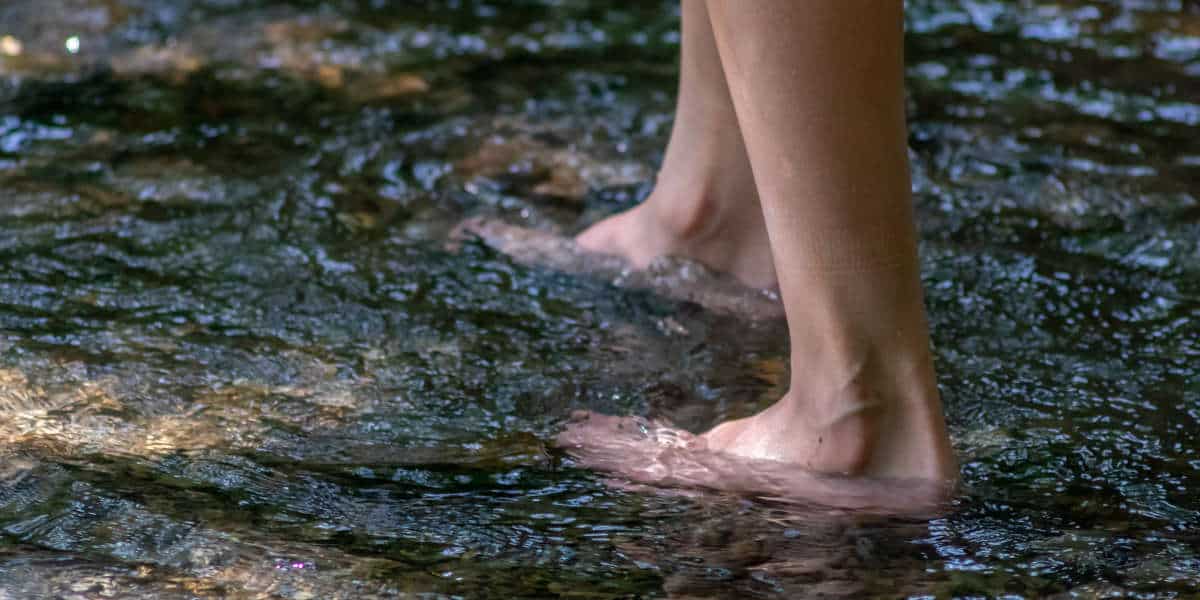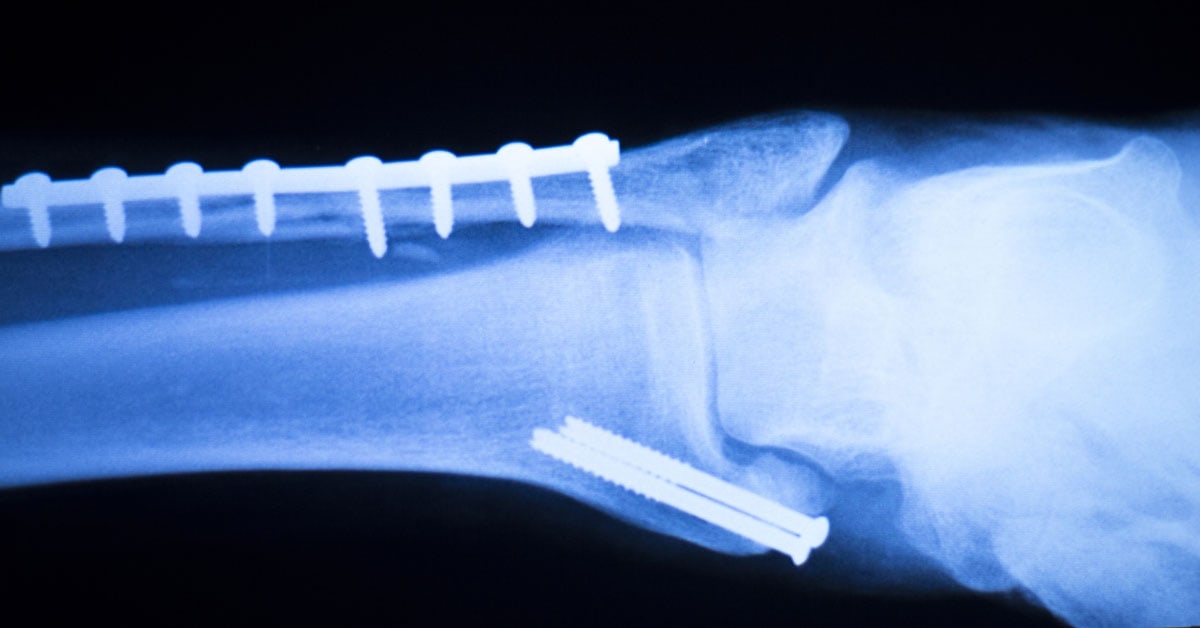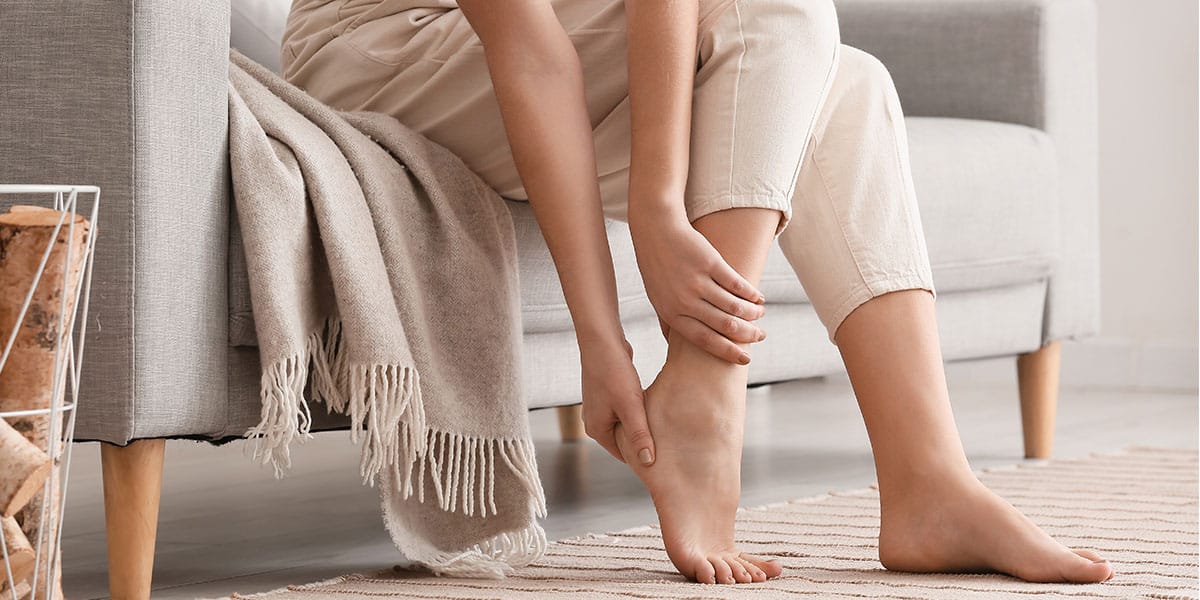- Home
- Foot & Ankle Conditions
- Hammer Toe
- Published 6/1/2018
- Last Reviewed 2/24/2025
- Published 6/1/2018
- Last Reviewed 2/24/2025
What's a hammer toe?
A hammertoe occurs when the middle joint of the toe develops an abnormal bend and becomes flexed or bent downward. This is due to a muscle imbalance around the toe joints and usually happens in the second, third, and fourth toes.
This imbalance causes the toe to bend at one or more joints, eventually pushing the middle of the toe upward into a claw-like position.
Unfortunately, a hammertoe causes pain and won’t get better without intervention. The sooner it is treated, the better the outcome and the shorter the recovery.
- What causes a hammer toe?
- Flexible hammertoe vs. rigid hammertoe: what’s the difference?
- What are the symptoms of a hammer toe?
- How is a hammer toe diagnosed?
- What are non-invasive treatment options for hammer toes?
- Surgical treatment options for a hammer toe
- What are the benefits of hammertoe surgery?
- Hammer toe surgery recovery
- Why choose University Foot and Ankle Institute for hammer toe treatment?
- Hammer Toe and Hammer Toe Surgery FAQs
- What are mallet toe and claw toe?
- Are hammertoes the same as corns?
- How is hammertoe treated?
- How does hammertoe surgery affect performance in sports, especially football and running?
- Can hammertoe be treated with surgery?
- What can I expect during my recovery from hammertoe surgery ?
- Can a hammertoe come back after surgery?
-
ABFAS® Board Certified in Foot Surgery and Reconstructive Rearfoot and Ankle Surgery. and Director of University Foot and Ankle Institute
Dr. Bob Baravarian DPM, FACFAS is a Board-Certified Podiatric Foot and Ankle Specialist. He is an assistant clinical professor at the UCLA School of Medicine and serves as Director of University Foot and Ankle Institute.
Dr. Baravarian has been involved in athletics his entire life and played competitive tennis in high school and college. He has an interest in sports medicine, arthritis therapy, and trauma/reconstructive surgery of the foot and ankle. He is also fluent in five languages (English, French, Spanish, Farsi, and Hebrew),
-
ABFAS® Board Certified in Foot Surgery and Reconstructive Rearfoot and Ankle Surgery. and Director of University Foot and Ankle Institute
Dr. Bob Baravarian DPM, FACFAS is a Board-Certified Podiatric Foot and Ankle Specialist. He is an assistant clinical professor at the UCLA School of Medicine and serves as Director of University Foot and Ankle Institute.
Dr. Baravarian has been involved in athletics his entire life and played competitive tennis in high school and college. He has an interest in sports medicine, arthritis therapy, and trauma/reconstructive surgery of the foot and ankle. He is also fluent in five languages (English, French, Spanish, Farsi, and Hebrew),
Learn More from our Hammer Toe Blog Articles
 Dr. Redkar treated my ingrown toenail expertly and sympathetically. I had a lot of questions, and she took the time to answer ...Susan M.
Dr. Redkar treated my ingrown toenail expertly and sympathetically. I had a lot of questions, and she took the time to answer ...Susan M. I liked it.Liisa L.
I liked it.Liisa L. I depend on the doctors at UFAI to provide cutting edge treatments. Twice, I have traveled from Tucson, Arizona to get the car...Jean S.
I depend on the doctors at UFAI to provide cutting edge treatments. Twice, I have traveled from Tucson, Arizona to get the car...Jean S. They helped me in an emergency situation. Will go in for consultation with a Dr H????
They helped me in an emergency situation. Will go in for consultation with a Dr H????
Re foot durgeryYvonne S. It went very smoothly.Maria S.
It went very smoothly.Maria S. My experience at the clinic was wonderful. Everybody was super nice and basically on time. Love Dr. Bavarian and also love the ...Lynn B.
My experience at the clinic was wonderful. Everybody was super nice and basically on time. Love Dr. Bavarian and also love the ...Lynn B. I've been coming to Dr. Briskin ever since my son was in elementary school (he's now 29). I don't think there's a better podiat...Tina C.
I've been coming to Dr. Briskin ever since my son was in elementary school (he's now 29). I don't think there's a better podiat...Tina C. I fill I got the best service there is thank youJames G.
I fill I got the best service there is thank youJames G. My experience with your practice far exceeded any of my expectations! The staff was always friendly, positive and informative. ...Christy M.
My experience with your practice far exceeded any of my expectations! The staff was always friendly, positive and informative. ...Christy M. If you want to be taken great Care of and know all your needs will be met..go see to this office..their work ethic is impeccableNeda G.
If you want to be taken great Care of and know all your needs will be met..go see to this office..their work ethic is impeccableNeda G. Love Dr. Johnson.Emily C.
Love Dr. Johnson.Emily C. I am a new patient and felt very comfortable from the moment I arrived to the end of my visit/appointment.Timothy L.
I am a new patient and felt very comfortable from the moment I arrived to the end of my visit/appointment.Timothy L.
